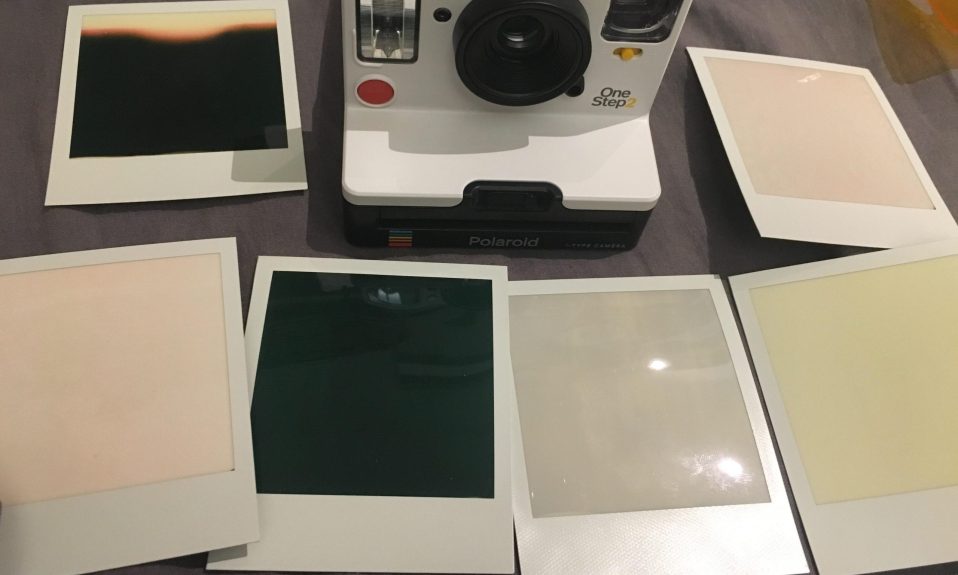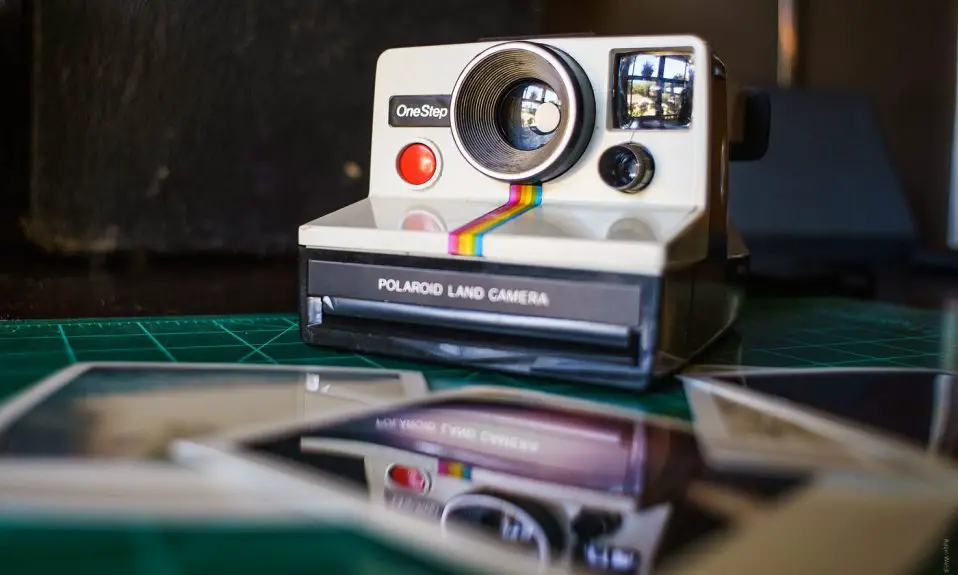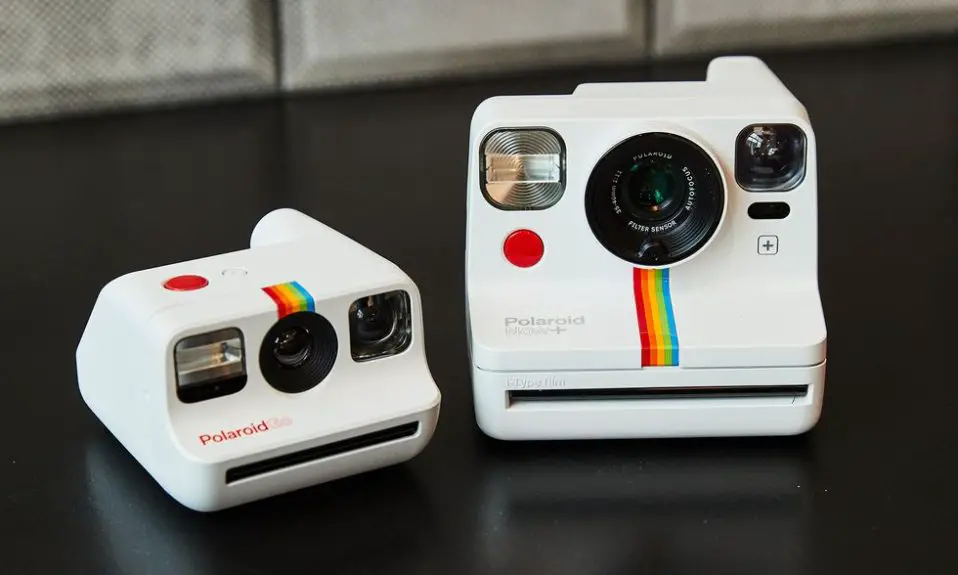Photography enthusiasts often cherish the unique experience of using Polaroid cameras for instant gratification in picture-taking.
However, the magic of instant photography can be tempered by the disappointment of a Polaroid photo not developing properly.
Part of the charm of these iconic cameras lies in their ability to produce a tangible photograph within minutes, but this process can sometimes yield less than perfect results.
In my experience, several factors can contribute to issues with Polaroid film development. Proper film storage, the camera’s functionality, and environmental variables play critical roles in ensuring a Polaroid picture develops as expected.
Understanding the common pitfalls that can affect the development process is essential for any Polaroid user looking to capture memorable images effectively.
Contents
- Basics of Polaroid Film Development
- Common Issues and Troubleshooting
- Step-by-Step Guide for Proper Development
- Maintenance Tips for Polaroid Cameras
- Expert Techniques for Enhancing Photo Quality
- Resources and Support
- Frequently Asked Questions
- Why are my Polaroids not developing as expected?
- What causes a Polaroid picture to come out white or blank?
- How can you fix a Polaroid photo that is underdeveloped?
- What are the potential reasons for faded Polaroid photos?
- How long should it typically take for a Polaroid photo to fully develop?
- What steps should be taken to ensure Polaroid photos develop properly?
Basics of Polaroid Film Development
In discussing Polaroid film development, it is essential to understand the components of the film and the mechanisms by which Polaroid cameras process them to create instant photographs.
Components of Polaroid Film
Polaroid film consists of multiple layers that play a key role in the development process. Each film pack includes:
- Light-sensitive layer: Reacts to light exposure.
- Negative layer: Captures the image.
- Developer layer: Contains chemicals that process the image.
- Timing layer: Controls the development time.
- Image layer: The final layer where the developed photo appears.
How Polaroid Cameras Develop Photos
When I press the shutter button on my Polaroid camera, a sequence of events unfolds:
- Exposure: Light enters through the lens, exposing the light-sensitive layer. This starts the chemical reaction.
- Ejection: The film is pushed out of the camera by rollers.
- Chemical distribution: These rollers also burst a pod of developer chemicals that spread across the image layer.
- Development time: During this stage, the image appears as the chemicals react appropriately, usually within a few minutes depending on the ambient temperature.
By understanding these fundamentals, you can better troubleshoot any issues that arise during the development of Polaroid photos.
Common Issues and Troubleshooting

In my experience resolving issues with Polaroid cameras, I’ve found that problems generally arise from a few key areas including film exposure, battery power, environmental factors, and the film cartridge itself.
Film Exposure Problems
When images are overexposed or fail to develop, it’s often a matter of incorrect lighting or film usage. Here’s what I check first:
- Lighting Conditions: I ensure the subject is well-lit and adjust my camera’s exposure settings if it has them. Overexposure can lead to washed-out photos, while underexposure can result in dark images.
- Film Expiration: I always verify the film’s expiry date. Expired film can lead to undeveloped or poorly developed images due to the breakdown of chemicals.
Battery and Power Issues
Polaroid cameras use batteries not just for power, but also to ensure proper development of photos. Here are common battery-related issues:
- Battery Charge: I confirm the camera’s battery is charged. A dead battery can prevent the photo from ejecting and developing.
- Battery Contacts: I check for clean contacts in the film pack, as corrosion or dirt can interrupt power supply critical for camera operation and film development.
Temperature and Environmental Factors
Temperature extremes can affect film development. I follow these guidelines:
- Optimal Temperature Range: I make sure to use my camera in temperatures between 55°F and 82°F (13°C and 28°C) for best results.
- Storage Conditions: I store my film in a cool, dry place to prevent any temperature-related issues during development.
Film Cartridge Issues
A problematic film cartridge can result in several development issues. Here’s how I handle them:
- Correct Film Type: I match the film type to my specific Polaroid camera model to avoid any incompatibilities.
- Cartridge Insertion: I ensure the film cartridge is inserted correctly and that there are no blockages, damaged film, or exposed film that could impair development.
Step-by-Step Guide for Proper Development
In this guide, I detail specific steps to ensure Polaroids develop correctly, addressing common issues and maintaining appropriate conditions for development.
Preventing Exposure Issues
After taking a photo with a Polaroid camera, the film undergoes a complex chemical process. Here’s how I prevent exposure-related issues:
- Use Adequate Lighting: To capture a clear image, I make sure to take photos in well-lit conditions or use the camera’s built-in flash.
- Shield from Light: Immediately after the film is ejected, I carefully shield it from bright light. Polaroid photos can be sensitive to light during the first few minutes of development.
Maintaining Optimal Development Conditions
The development of Polaroid film is also sensitive to temperature and storage conditions. Here are steps I follow:
- Check Film and Camera Before Use:
- Expiration: I always verify the film is not expired as outdated film can lead to poor development.
- Batteries: I ensure the camera’s batteries are fresh since low battery power can affect the development process.
- Temperature Control: I use the film within its ideal temperature range, typically between 55°F to 82°F (13°C to 28°C), since extreme temperatures can interfere with the developing chemicals.
- Film Storage: I store unused film in a cool, dry place to keep the chemicals in good condition.
By following these specific steps, I can typically ensure that my Polaroid photos develop as expected, capturing memories with clarity and color fidelity.
Maintenance Tips for Polaroid Cameras
Maintaining a Polaroid camera is crucial for ensuring long-lasting functionality and quality photo development. Regular cleaning and proper storage are foundational to this upkeep.
Regular Cleaning Routines
Lens Cleaning:
- Use a soft, lint-free cloth or lens brush.
- Apply a small amount of lens cleaning solution if needed; avoid harsh chemicals.
Roller Maintenance:
- Open the film door after removing the film pack.
- Gently wipe the rollers clean with a damp cloth.
- Allow the rollers to dry completely before inserting a new film pack.
Exterior Surface Cleaning:
- Use a soft cloth slightly dampened with water.
- Gently wipe down the camera body to remove dust and debris.
Storage Recommendations
Optimal Temperature:
- Store the camera in a cool, dry place.
- Avoid extreme temperatures to protect the camera’s mechanical parts and film.
Moisture Control:
- Include silica gel packets or other desiccants when storing for long periods to absorb excess moisture.
Film Storage:
- Keep unused film packs in their original packaging, refrigerated if possible, until ready to use.
- Ensure film is at room temperature before loading it into the camera.
Expert Techniques for Enhancing Photo Quality
Polaroid photography uniquely combines instant gratification with the timeless charm of physical photos. I’ll guide you through the nuances of expertly handling your camera and fine-tuning settings for optimal photo quality.
Advanced Handling of Polaroid Cameras
Body posture and stability: The way I hold my Polaroid camera can significantly affect image sharpness. I ensure a firm grip and use my body as a stabilizer, especially in low-light conditions where the shutter speed might be slower.
- Grip: Use your right hand to grip the camera’s body, your left to support the camera bottom, and press your elbows against your torso to reduce shake.
- Release: Gently depress the shutter release to avoid jarring the camera.
Environmental considerations: Understanding and adapting to environmental factors is key. Polaroid film is sensitive to temperature variations, so I keep my camera and film at a moderate temperature. I also shield developing photos from light for the first few minutes after they eject from the camera.
- Temperature: Store film and camera between 55°F (13°C) and 82°F (28°C).
- Light Shielding: Immediately after a photo ejects, place it face down or use a light shield for up to 6 minutes.
Optimizing Film and Camera Settings
Exposure adjustments: In my experience, getting the perfect exposure requires balancing the light sensitivity of the film with the lighting conditions. I use the camera’s exposure compensation dial to adjust for environments that are too bright or too dark.
- Overexposure: If it’s very bright, I turn the exposure compensation toward the darker setting to preserve details that would otherwise be washed out.
- Underexposure: In dim settings, I nudge the compensation toward the lighter setting to ensure the subject isn’t lost in shadow.
Flash utilization: Polaroid film has a low dynamic range, so I often use flash to illuminate the subject evenly. I’m careful to position subjects within the effective range of the flash, typically about 4-9 feet (1.2-2.7 meters) away, to optimize exposure.
- Flash On: I use the flash in most scenarios unless I’m in bright outdoor light.
- Subject Distance: Maintain an appropriate distance from the subject for the flash to be effective without overexposing the photo.
Resources and Support
When handling issues with Polaroid cameras not developing properly, it’s essential to know where to look for help and support. There are reliable resources available for assistance.
Manufacturer’s Guidelines
The first place I check is Polaroid’s official website or the user’s manual for my camera model. These often contain:
- Troubleshooting sections
- Tips for handling film and camera
- Contact information for customer support
They provide detailed instructions specific to my device, ensuring I employ recommended practices that do not void warranties or damage my camera.
Online Communities and Forums
Online, I can find numerous forums and community groups dedicated to Polaroid enthusiasts. These include:
- Reddit communities such as r/Polaroid
- Social media groups on platforms like Facebook or Instagram
In these forums, I can share my issues and receive advice from experienced users who have faced similar problems.
Professional Services for Repair and Maintenance
If I’m unable to resolve issues on my own, I consider professional services. I look for:
- Authorized repair centers: They have the expertise to diagnose and fix complex problems.
- Local camera shops: Some may offer maintenance services for vintage models.
Before visiting a professional, I ensure they have experience with Polaroid cameras to avoid mishandling my equipment.
Frequently Asked Questions
In this section, I provide clear, authoritative answers to common questions about issues with Polaroid photo development. Each subsection addresses a specific problem and offers insights into the potential causes and solutions.
Why are my Polaroids not developing as expected?
Several factors could affect the development of Polaroid photos. These include film exposure to light before use, expired film, incorrect storage of film, or issues with the camera, such as dirty rollers or lens problems.
What causes a Polaroid picture to come out white or blank?
A white or blank Polaroid photo is typically a sign of overexposure to light. This excessive exposure occurs either due to the film being ejected into bright light or a malfunction in the camera that allows too much light to hit the film during the shot.
How can you fix a Polaroid photo that is underdeveloped?
If a photo is underdeveloped, you may attempt to fix it by making sure the camera rollers are clean and working correctly, ensuring that the film is fresh and has been stored properly, and checking the battery strength in your Polaroid camera, as low power can affect development.
What are the potential reasons for faded Polaroid photos?
Faded Polaroid photos can result from several issues such as low-quality or expired film, prolonged exposure to light during storage, or chemical imbalances within the film itself. Environmental factors can also play a role.
How long should it typically take for a Polaroid photo to fully develop?
A Polaroid photo typically takes about 10 to 15 minutes to fully develop. The time can vary slightly depending on the film type and the ambient temperature, as colder conditions can slow down the development process.
What steps should be taken to ensure Polaroid photos develop properly?
To ensure proper development, store film in a cool, dark place, protect photos from light immediately after they’re taken, check your camera’s functioning parts like the rollers and battery, and always use film before its expiry date. Proper handling is crucial for optimal photo quality.





